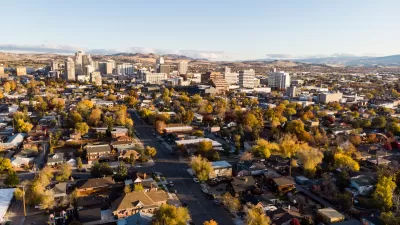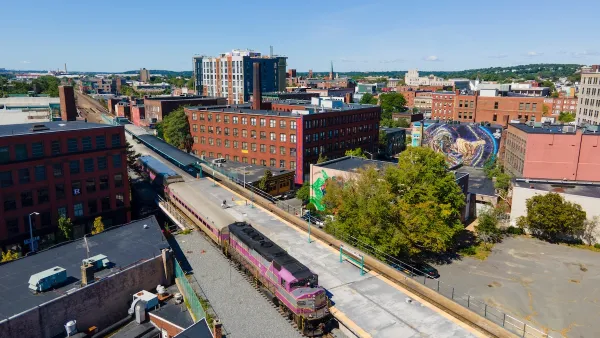If given final approval, the plan would increase the allowable floor area ratio to permit denser housing development in single-family neighborhoods and near transit.

The Sacramento City Council approved a set of changes to the city’s general plan that make it easier to build multifamily housing in single-family neighborhoods as a way to ease the local housing crisis, with a final vote coming early next year.
As Emily Hamann explains in the Sacramento Business Journal, the new rules are designed to increase density and create more housing while maintaining the neighborhood scale. “The changes will get rid of zoning designations that restrict the number of residential units that can be built on a lot, and instead base restrictions on the overall size of the building.” Under the new rules, a project with more units would be allowed more floor area ratio (FAR). “However, the city’s existing other restrictions, like maximum building height and lot coverage, mandatory setbacks and open space requirements still apply.”
The council supported a similar change to a higher allowable FAR for buildings near transit.
FULL STORY: Sacramento City Council approves plan that would add density to single-family neighborhoods

Maui's Vacation Rental Debate Turns Ugly
Verbal attacks, misinformation campaigns and fistfights plague a high-stakes debate to convert thousands of vacation rentals into long-term housing.

Planetizen Federal Action Tracker
A weekly monitor of how Trump’s orders and actions are impacting planners and planning in America.

In Urban Planning, AI Prompting Could be the New Design Thinking
Creativity has long been key to great urban design. What if we see AI as our new creative partner?

Car Designs Make it Harder to See Pedestrians
Blind spots created by thicker pillars built to withstand rollover crashes are creating dangerous conditions for people outside vehicles.

Cal Fire Chatbot Fails to Answer Basic Questions
An AI chatbot designed to provide information about wildfires can’t answer questions about evacuation orders, among other problems.

What Happens if Trump Kills Section 8?
The Trump admin aims to slash federal rental aid by nearly half and shift distribution to states. Experts warn this could spike homelessness and destabilize communities nationwide.
Urban Design for Planners 1: Software Tools
This six-course series explores essential urban design concepts using open source software and equips planners with the tools they need to participate fully in the urban design process.
Planning for Universal Design
Learn the tools for implementing Universal Design in planning regulations.
Appalachian Highlands Housing Partners
Gallatin County Department of Planning & Community Development
Heyer Gruel & Associates PA
Mpact (founded as Rail~Volution)
City of Camden Redevelopment Agency
City of Astoria
City of Portland
City of Laramie





























